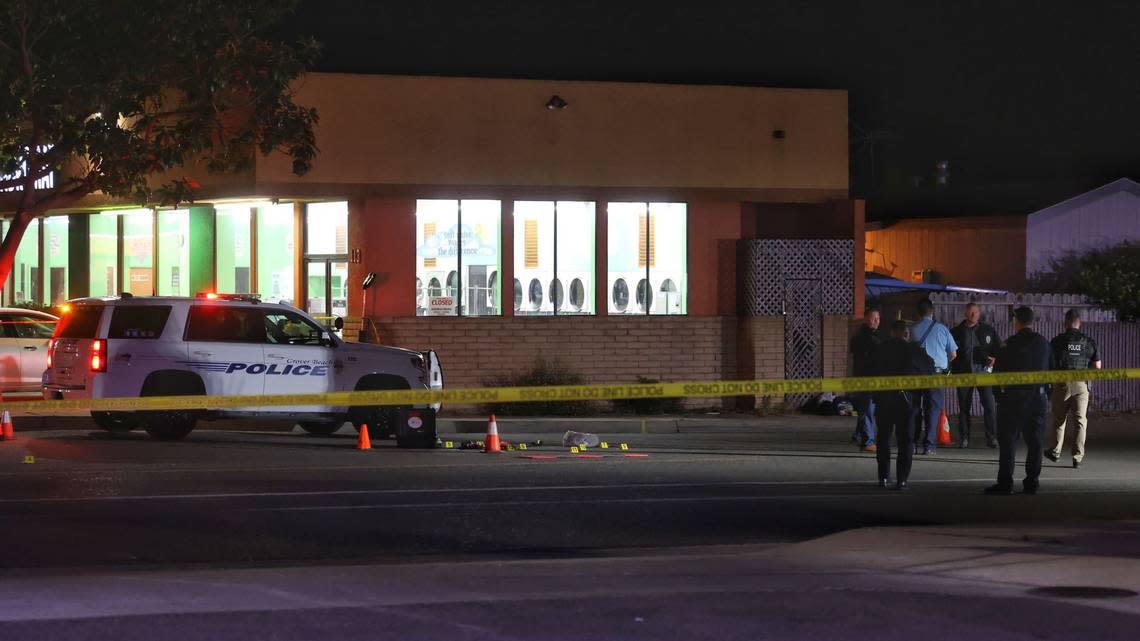Grover Beach Police Department did everything right in officer-involved shooting | Opinion

Officer-involved shootings resulting in the deaths of unarmed civilians are among the most traumatic and potentially controversial incidents faced by law enforcement.
In the past, public safety agencies would typically hunker down, refusing to release video of the incident or even basic information. Many times, they would wait several long months before issuing results of the investigation, and too often, those would amount to little more than terse statements exonerating the officers.
Is it any wonder the public grew increasingly distrustful of law enforcement?
Fortunately, that’s changing for the better, and the recent officer-involved shooting in Grover Beach is a textbook example of how to handle these sensitive situations the right way.
Within two weeks, the Grover Beach Police Department not only released video from the responding officer’s body camera and the 911 call, it also made public footage from a “citizen witness” at the scene, in addition to responding to questions from The Tribune.
What led up to officer-involved shooting in Grover Beach
The shooting happened the evening of May 25, a Saturday, at Grand Avenue and 13th Street — one of the busiest intersections in the city.
At 6:23 p.m., police received a report of a man brandishing a firearm, but police were unable to locate him. Fifteen minutes later, a report came in of a man throwing rocks at cars near the same location.
This time, an officer located the man, who has since been identified as Aaron Edward Gardner, 41, of Independence, Missouri.
Gardner warned the officer that he had a weapon — which turned out to be a replica firearm — and threatened to shoot him.
The officer gave Gardner several commands to put down the gun, but Gardner “advanced toward the officer, quickly raising his right arm with a replica firearm in his hand,” the Police Department said in a news release.
“The officer (then) fired his service weapon and struck the male several times.”
What the videos show
We don’t have to take the word of the Police Department; the videos clearly show what happened.
“The body-camera video shows Gardner refusing to comply with an officer’s demand to raise his hands,” Tribune reporter Chloe Jones wrote, “before drawing a replica firearm and pointing it at the officer, who then fires four shots in return.”
We can clearly hear the officer giving Gardner repeated commands.
“I don’t want to hurt you, sir,” he says at one point. “I will shoot you if I have to,” to which Gardner replies, “Good.”
The videos are disturbing. They show how quickly an incident occurring in clear view of the public in broad daylight can turn deadly — as well as the risks that officers face even in small, laid-back communities like Grover Beach.
What happens next
Police Chief John Peters said that anytime officers are involved in critical incidents, they are placed on administrative leave and offered support to deal with the trauma they experience.
Peters told The Tribune he believes the officer acted accordingly in view of the threat he faced.
However, the incident has been referred to the state Department of Justice, which will investigate and make a final determination. That’s required whenever an officer-involved shooting results in the death of an unarmed civilian. It has been the case since AB 1506 — the Deadly Force Accountability Act — took effect in 2021.
That, too, is an improvement over the “old days,” since it guarantees an outside agency will investigate.
What happened in Grover Beach is a tragedy. A man obviously deeply disturbed put himself in a position where the officer had no choice but to use deadly force.
That the man was armed with a replica gun compounds the tragedy.
Too often, those very realistic-looking “fake” weapons are mistaken for the real thing by police officers, and have resulted in the deaths of children, including Tamir Rice, a 12-year-old boy was shot dead by a Cleveland, Ohio, police officer in 2014 because he had been playing with a toy pistol. The rookie officer who shot him described his as a “Black male, maybe 20, black revolver, black handgun by him.” The fatal shooting of an innocent Black boy ignited national outrage.
California attempted to avoid such incidents by passing a law in 2015 the requires toy guns to be “distinguishable” from actual weapons by painting them white or some other bright color, or adding florescent strips. But as this incident shows, that hasn’t solved the problem posed by realistic replicas of firearms.
By releasing video and providing information in a timely fashion, the Grover Beach Police Department acted professionally, transparently and compassionately.
That should inspire confidence in Chief Peters and his entire staff — and serve as an example of how law enforcement can restore public trust.


